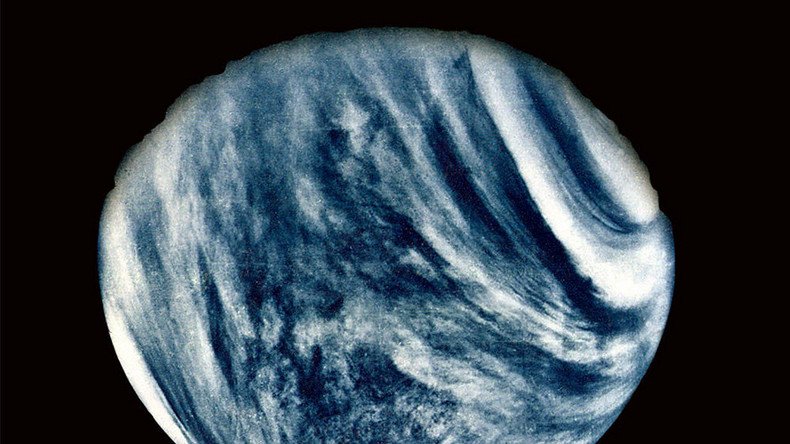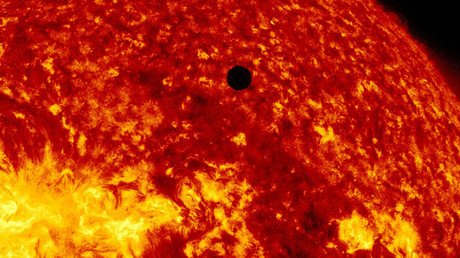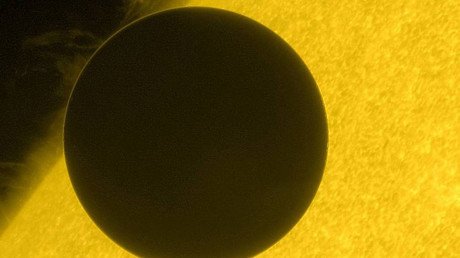Possible joint Russia-US mission to Venus takes shape, researcher says

A proposed joint mission to Venus could feature a Russian rocket and orbital module alongside a US “atmospheric plane” and durable surface probes, a top Russian scientist says.
The proposed joint mission, dubbed Venus-D, is taking shape, in which Russia’s Roscosmos space agency would provide an orbital and landing module, alongside a rocket to deliver them to Venus, while NASA would provide atmospheric probes that could survive the planet’s extreme conditions, the head of the Planetary Atmospheric Spectrometry Laboratory in the Space Research Institute of the Russian Academy of Sciences, Ludmila Zasova, told TASS.
Venus, which has an extremely hot and hazardous environment, is a “natural laboratory to study the greenhouse effect,” Zasova said. Research on Venus could help understand the effect better and perhaps prevent it from going to extremes on Earth.
The proposed Venus-D mission consists of the Russian Angara-A5 rocket and orbital and landing modules, while NASA would provide additional scientific devices, along with an apparatus to study the atmosphere, as well as durable surface probes. The Russian orbital module is designed for at least three years of active work, and will be equipped “with spectrometers of all sorts” to study Venus’ atmospheric features.
“The mission’s base setup consists of an orbital and a landing module. The landing module is designed to function for only two hours on Venus’ surface, but it’s enough to perform the main tests with its onboard tools,” Zasova said.
“Cutting edge scientific equipment will be installed on board in a sealed compartment; the module will be equipped with devices to take atmospheric and soil samples to be studied on board. There will be several cameras, including wide-angle ones, and an HD camera.”
While the idea of terraforming Venus is still the stuff of science fiction, the planned Venus-D mission might shed some light on the factors that shaped the planet’s current climate.
One of Venus’ most fascinating features to be studied is “superrotation,” according to Zasova. Near the surface, the planet’s atmosphere rotates at a speed of only 0.5-2m/s – a light breeze. At higher altitudes, the speed reaches 100m/s – half as fast as the strongest hurricanes.
Another mysterious phenomenon is the ability of Venus’ clouds to absorb ultraviolet light, fueling speculation that the clouds could contain microbial life. While unlikely, it is not impossible, according to Zasova, since some of the Earth’s bacteria can absorb ultraviolet light, while others can live in highly hazardous and acidic environments, such as the human stomach.
NASA could also provide additional equipment for the landing module, as well as durable surface mini-stations, which could be added to the main landing module and continue its work for up to a year after the base vehicle “dies.” A mobile atmospheric probe, crucial for cloud study, could also be provided by the Americans, Zasova told TASS.
“They might include a moving platform with its own propulsion system, a plane of sorts, which would be able to change direction and altitude while flying in Venus’ clouds, or a balloon probe, which would move in the clouds with the wind. In both cases, it will have a set of tools on board to study atmospheric dynamics, the composition of the atmosphere, the clouds, and the ultraviolet absorbent,” Zasova said.
All previous Venus surface probes landed on basalt, which covers up to 80 percent of the planet’s surface. The researchers are considering landing the new apparatus on the so-called tesserae – highly deformed areas, free of the basalt crust. The tesserae are believed to expose the oldest solid materials of the planet, and sampling them might provide vital information on Venus’ history and formation.
“If the mission does take place, the next logical step will be sending mobile surface devices – rovers. Next one – sending back to Earth samples of atmosphere, and then Venus’ soil, probably from a tessera. But this is a matter for the future,” Zasova concluded.














